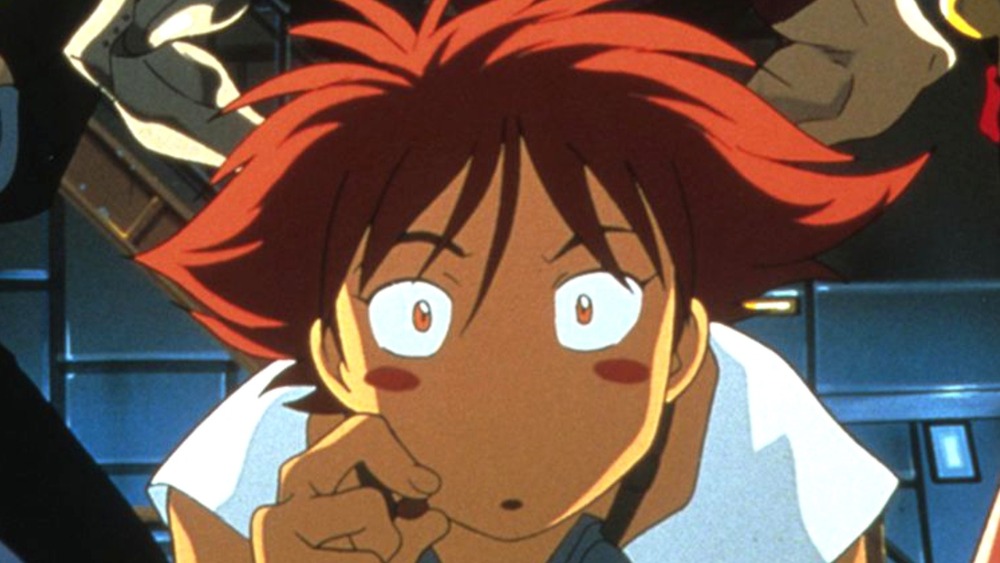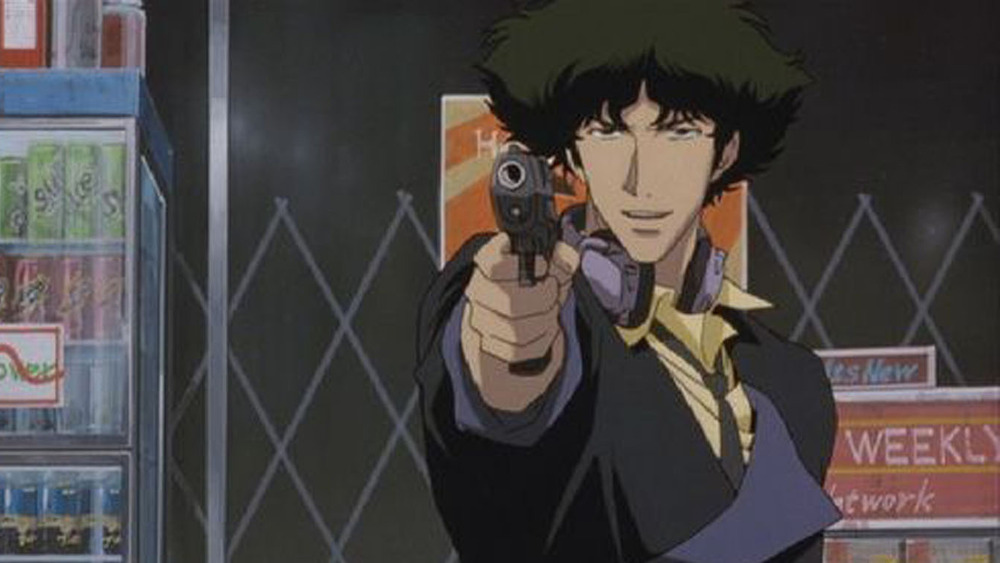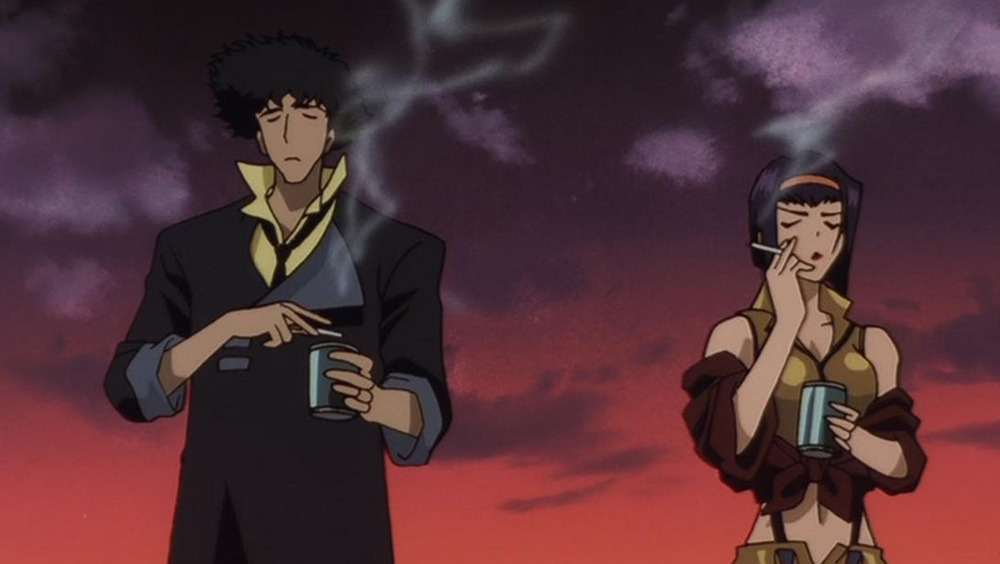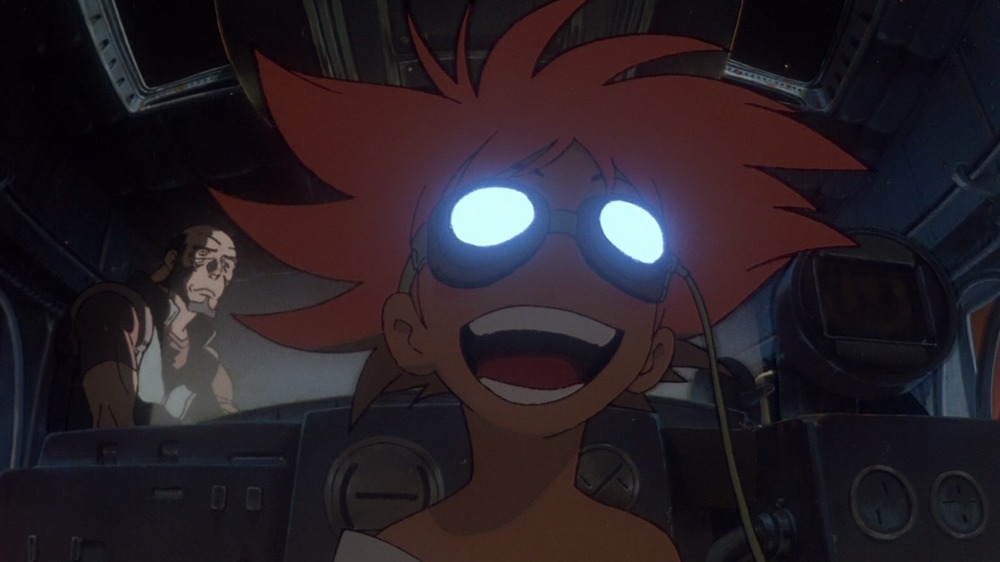How Cowboy Bebop Was Completely Saved By The English Dub
Cowboy Bebop stands out as one of the best animes of all time. And, even more remarkably, its English dub is regarded by some as actually being better than the original Japanese performances. The subs versus dubs debate will rage through non-Japanese anime audiences forever, and one of the main examples in the dub camp's favor is Bebop. Thanks in part to the dub's huge U.S. success, a live-action version is coming to Netflix in 2021.
Cowboy Bebop was the auteur debut of Shinichirō Watanabe, who said he wanted "to create something that had never been seen before" with his new series. The show was inspired by jazz music, Westerns, film noir, Led Zeppelin, and Lupin III — combining all these elements into something entirely new, as Watanabe had hoped. Musician Yoko Kanno gave the show its iconic soundtrack, along with her band, Seatbelts. But the show initially couldn't air its full run on Japanese television because the episodes were too violent and raw. Eventually, the whole series ran on the Japanese network Wowow before being dubbed into English and eventually airing as the first anime on the Cartoon Network's Adult Swim. Cowboy Bebop's English dub not only launched the show to international fame, but it also helped spur a Bebop feature film and brought critical acclaim to the anime genre that was never seen before internationally.
International fame inspired a Bebop movie
The success of Cowboy Bebop in Japan and worldwide prompted Sunrise and Bandai Visual to commission a movie. The English dub was a hit in the U.S. even before it ran on the Cartoon Network, bringing more and more people into the world of anime. Cowboy Bebop: Knockin' on Heaven's Door was renamed Cowboy Bebop: The Movie for U.S. audiences. Both the Japanese and English casts reprised their roles in the film, as did composer Yoko Kanno.
The movie got an increased budget from the series, and the animators were able to lavish attention onto each frame as a result. Shinichirō Watanabe brought in two guest directors for action sequences: Jin-Roh's Hiroyuki Okiura and Wolf's Rain's Tensai Okamura. The latter had also worked on another big anime that found critical success in the U.S., Neon Genesis Evangelion.
Cowboy Bebop: The Movie came out in Japan in 2001 but wasn't released in the U.S. until 2003. However, a 2002 preview screening completely sold out, showing the demand. That enthusiasm carried over to the English dub's other work.
The dub that launched a thousand careers
The English dub was the first voice direction job for Mary Elizabeth McGlynn. She has gone on to voice-direct dozens of projects, including the Silent Hill video game series and the Naruto dub. McGlynn also works steadily as a voice actor, providing the voices for the English version of Ghost in the Shell: Stand Alone Complex's Major and Steven Universe's Dr. Maheswaren.
Cowboy Bebop was a breakout role for McGlynn's now-husband, Steve Blum. "I didn't feel worthy of the part," Blum wrote on his blog. "It was my first leading role. But I had the part, so I had to step up." Blum's deadpan delivery as Spike Spiegel has become the yardstick by which all cool tough guys with a heart are judged. After Bebop, Blum went on to huge voice-acting success, eventually winning the Guinness World Record for most video game voice-acting credits. He voiced the leads in other Adult Swim-airing dubs, such as The Big O and Shinichirō Watanabe's follow-up joint, Samurai Champloo. He also voiced TOM the robot for the Cartoon Network's Toonami block.
In fact, nearly everyone who worked on the English dub of Bebop has gone on to illustrious careers. Before voicing Jet Black, Beau Billingslea already had quite the live-action career. But he was able to parlay that gravelly voice into becoming the official tough guy voice of multiple History Channel shows. Wendee Lee was already a veteran dubber before she portrayed Faye Valentine. Thanks to her work in one of the most well-respected dubs of all time, she continues to do multiple projects a year. And Melissa Fahn went from voicing Ed to joining another cult series, Invader Zim, for which she voiced Gaz.
Cowboy Bebop helped finally popularize anime in America
Cowboy Bebop's English dub was the first anime to run on Adult Swim. Before the internet made it easy to watch anime almost simultaneously with Japan, people had to either special order VHS tapes or wait for a dub to make its way to U.S. TV. To this day, Adult Swim (and its little kid counterpart, Toonami) is still one of the main ways an anime breaks into Western culture. The Cartoon Network popularized for Western audiences such anime as Attack on Titan, The Big O (whose U.S. success actually spawned a sequel season), FLCL, Paranoia Agent, Shin-chan, InuYasha, Naruto, and One Piece. Arguably, these shows wouldn't have had the success (or a successfully produced dub) without Cowboy Bebop.
For a 26-episode series, Cowboy Bebop has an outsized legacy. In 2019, Netflix announced it was making a live-action version of the show with John Cho starring as Spike. Yoko Kanno's music continues its popularity, with the track "Cats on Mars" recently trending on TikTok. And fans have noted similar vibes between the show and The Mandalorian. Twenty years later, Cowboy Bebop continues to resonate.



